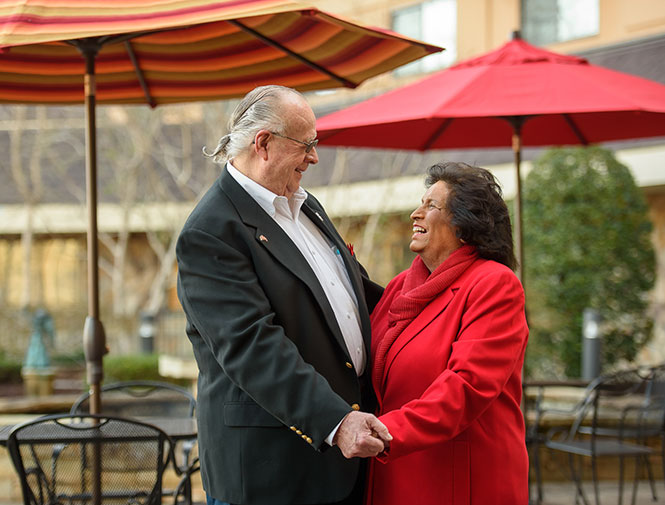Century Park Blog

The statistics are high: according to the Centers for Disease Control and Prevention, one in three individuals age 65 or older falls each year. That number goes up to one in two individuals at age 85.
The good news? The vast majority of falls are preventable. Starting to address the risk factors early in life not only gives you a greater quality of life in youth and young adulthood; it gives a better outlook for later.
Lowering fall risk early helps you have the energy, confidence and funds (few things eat up money the way emergency health care does) to do what you want when you're older. Low fall risk helps keep the doors open for things like traveling, playing ball with the grandkids and giving back to the community through volunteering.
What's the big deal about falls?
Kids can fall down and bounce right back up, but for seniors, a fall is rarely just a fall.
"As we age, our bodies undergo changes that amount to decreased reaction time, decreased healing, decreased water content and other things," explained Josh Haislip, assistant director of rehab at Life Care Center of Hixson. As a physical therapist, he frequently treats patients who have come for rehab after a fall.
Skin integrity and bone strength also decrease, leading to more acute injuries.
According to the CDC, falls are the No. 1 cause of injury for seniors. They account for five times more hospitalizations than other types of injuries. For example, 95 percent of hip fractures occur from falls.
One in five seniors who have a hip fracture dies within a year, often from resulting complications. Days spent in bed during recovery lead to muscle atrophy and increased weakness, which increases the risk of another fall and can decrease energy and quality of life. Lying still for long periods of time also increases the risk of blood clots (which can lead to strokes or heart attacks) and pneumonia.
I'm worried - what do I do?
The first step to lowering your fall risk is to be positive. Falls are preventable, and knowledge is power.
While these tips aren't comprehensive, they provide some easy ways you can stay on your feet as long as possible.
- Keep moving. While it may be tempting to avoid activities for fear of falling, this is just what studies show you shouldn't do. Instead, moderate exercise gives your body the strengthening it needs to maintain balance, besides letting you have more fun. Dr. Michael Crowe, on-site physician at Life Care Center of Collegedale, shared: "You don't even have to go to a gym - you can just walk. It's building muscles and coordination. It's pretty simple."
- Check your shoes. "People lose weight as they age, and sometimes their shoes don't fit," Dr. Crowe cautioned. Avoid high heels and flip-flops; instead, choose non-slip shoes that fit securely on your feet.
- Drink water. Hydration not only keeps your joints lubricated; it also keeps you feeling good so you can move more. Dehydration, in contrast, can lead to dizziness, lethargy and poor coordination. Choose water over soft drinks, tea or coffee since caffeine dehydrates.
- See well. "Something a lot of people forget about is vision," said Dr. Crowe. "If you don't see well, you trip over stuff, and you fall." Get your eyes checked annually, wear your glasses or contacts, and keep the areas of your home well lit - even using nightlights can be a help.
- Review your medication with your doctor. Some medicines, like blood pressure pills or antidepressants, can have side effects of dizziness. Talk to your doctor about everything you are taking and how the medications interact in your body. However, don't skip prescribed medications - always talk to your doctor first.
- Keep your house neat. Fall risk is partly environmental. Look around your house or apartment. Are there grab bars in the shower in case you slip? Are the items you use frequently within easy reach? Do you have area rugs you could trip over? (If so, remove them or secure them to the floor.) Is there clutter you can remove from walkways? These are just some of the things to consider.
- Address dizziness. If you feel dizzy when standing up, or notice an increase in dizziness in general, see your doctor. You may have a blood pressure issue or a vestibular problem that can be treated.
- Eat good food. Similar to hydration, getting proper nutrition helps your body function at its best. Lean proteins, vitamin-rich fruits and vegetables and hearty grains help keep your muscles and bones strong.
Why start young?
Many people don't start thinking about fall risk until their senior years or until they have already fallen.
Really, though, fall prevention starts in the teen years. When you're young, you build the bone that you will have in old age, and as you age, you lose bone mass, so build it up as much as possible early. It's the same with muscle.
"Investing time and focus on the contributing factors of falls early in life will delay or prevent the occurrence of falls as we age," said Haislip. "A proactive approach is advantageous, and education is the foundation for further action."
Taking these tips to heart just might help you stay on your feet so you can enjoy a long and healthy life and do the things you love longer.



